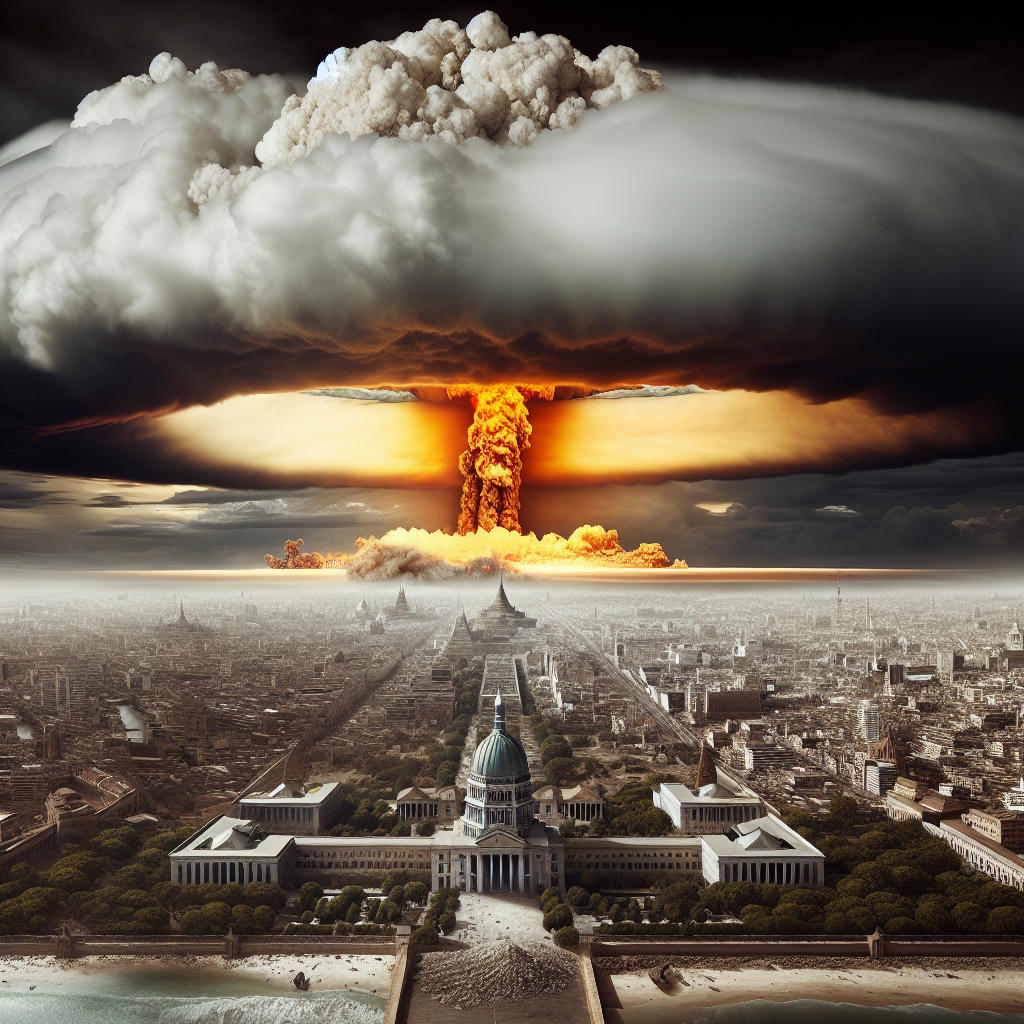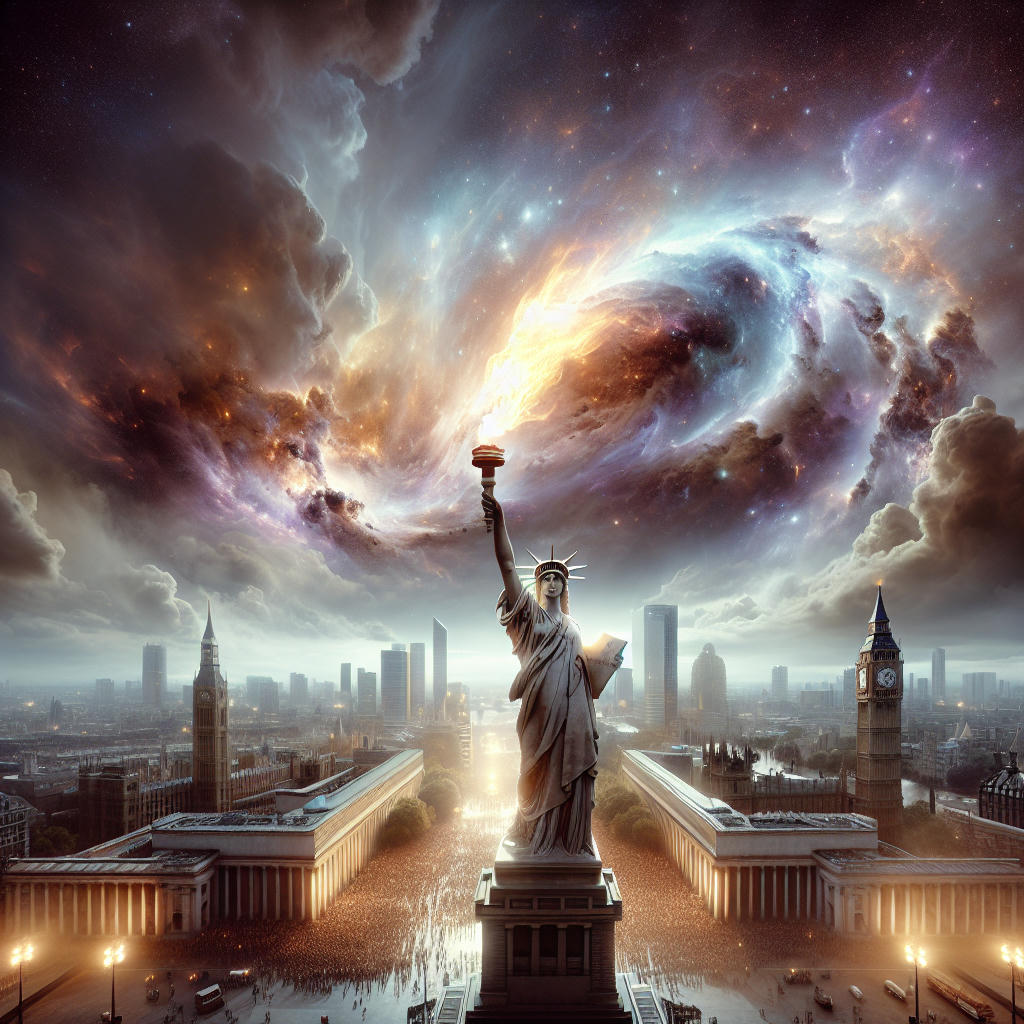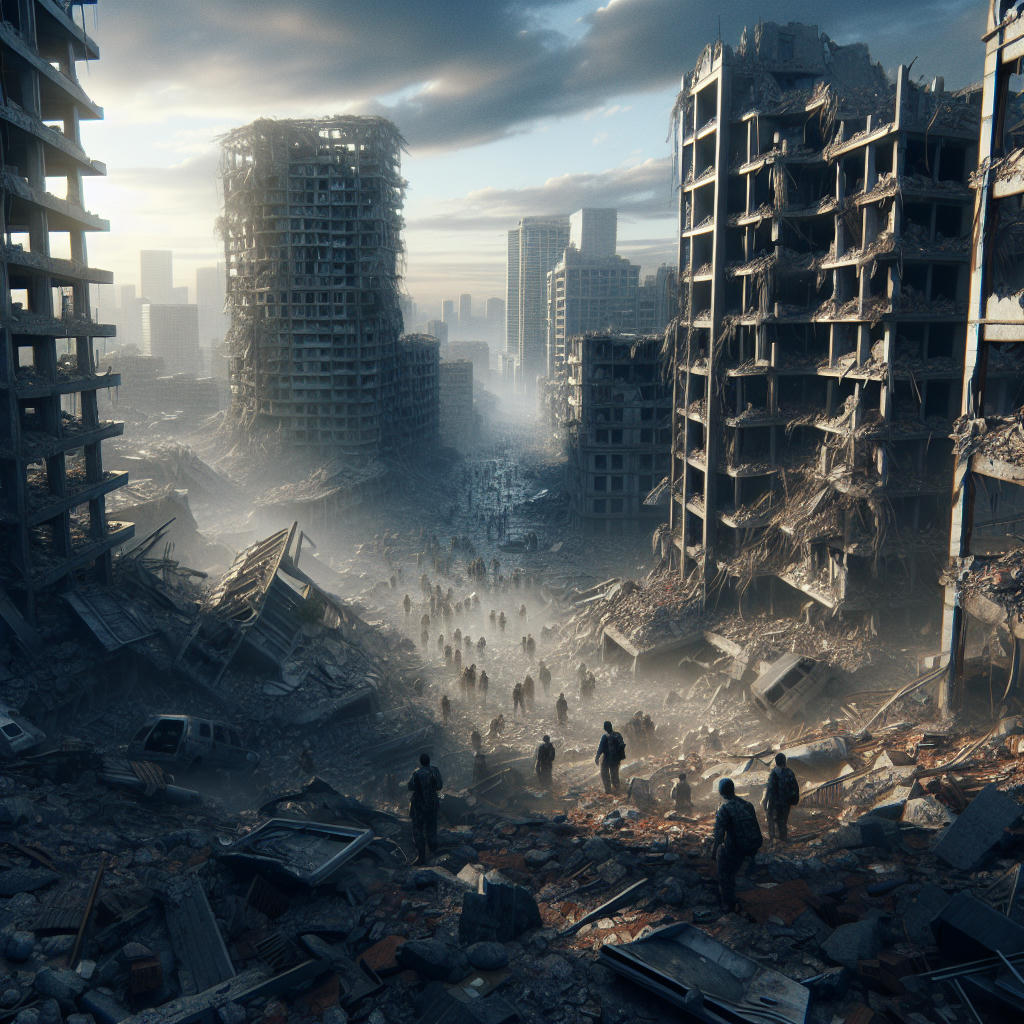In a world where the unimaginable becomes reality, the events of a single day can reshape the course of history. This is the story of a day when two of the world's most powerful nations turned their destructive might inward, unleashing nuclear devastation upon themselves. It is a tale of madness, desperation, and the ultimate cost of human folly.
The Prelude to Chaos
The tension had been building for years. Diplomatic relations between Russia and the United States had deteriorated to an all-time low. Economic sanctions, cyber warfare, and proxy conflicts had created an atmosphere of mutual distrust and animosity. Yet, no one could have predicted the cataclysmic events that would unfold on that fateful day.
In the early hours of a cold winter morning, a series of cryptic messages began to circulate among the highest echelons of the Russian government. Intelligence reports indicated an imminent threat, but the source was unclear. Panic set in as military leaders scrambled to make sense of the situation. In the confusion, a catastrophic decision was made.
The Russian Catastrophe
At precisely 6:00 AM Moscow time, a series of nuclear missiles were launched from silos deep within the Russian heartland. Their targets were not foreign adversaries, but major Russian cities. Moscow, St. Petersburg, and Novosibirsk were among the first to be hit. The devastation was immediate and absolute.
The world watched in horror as live broadcasts captured the annihilation of one of the world's most powerful nations. The reasons behind the self-inflicted destruction remained shrouded in mystery. Some speculated that it was a desperate attempt to prevent a coup, while others believed it was a final act of defiance against perceived internal enemies.
The American Tragedy
As news of the Russian catastrophe spread, the United States found itself in a state of heightened alert. The President and his advisors convened in the Situation Room, trying to piece together the puzzle. Was this an act of war? A prelude to a larger conflict? The uncertainty was paralyzing.
In the midst of the chaos, a similar series of cryptic messages began to circulate within the American military command. The threat was perceived as imminent and existential. In a moment of unprecedented fear and confusion, the unthinkable happened.
At 9:00 AM Eastern Standard Time, nuclear missiles were launched from American soil, targeting major cities across the United States. New York, Los Angeles, and Chicago were among the first to be obliterated. The land of the free was now a landscape of ruin and desolation.
The Aftermath
The world was plunged into a state of shock and disbelief. The two superpowers, once locked in a tense standoff, had turned their destructive capabilities upon themselves. The reasons behind these acts of self-destruction remained elusive, buried beneath layers of secrecy and confusion.
Survivors in both nations faced a grim reality. The infrastructure was decimated, and the social fabric was torn apart. The global economy teetered on the brink of collapse as markets reacted to the unprecedented events. Humanitarian crises erupted as millions were displaced, and the death toll climbed into the millions.
The Search for Answers
In the weeks and months that followed, international investigators and intelligence agencies worked tirelessly to uncover the truth. What had driven these nations to such extreme measures? Theories abounded, ranging from cyber manipulation by rogue states to internal power struggles that spiraled out of control.
One prevailing theory suggested that a sophisticated cyber attack had infiltrated the command and control systems of both nations, creating false alarms and triggering the catastrophic responses. Another theory posited that extremist factions within the military had seized control, driven by a fanatical belief in a purifying apocalypse.
Reflections on Humanity
As the world grappled with the aftermath, a profound sense of introspection took hold. The events of that day served as a stark reminder of the fragility of human civilization and the destructive potential of our technological advancements. It was a moment of reckoning, forcing humanity to confront its darkest impulses and the consequences of unchecked power.
In the ruins of Moscow and New York, survivors began to rebuild their lives, driven by a resilient spirit and a determination to learn from the past. International efforts to provide aid and support were unprecedented, as nations came together to help those in need.
A New Dawn
The story of that fateful day is a testament to the capacity for both destruction and resilience within the human spirit. It is a reminder that in the face of unimaginable adversity, there is always the potential for renewal and hope. As the world moves forward, the lessons of the past serve as a guiding light, illuminating the path toward a more peaceful and just future.
In the end, the tale of self-destruction is not just a story of despair, but also a story of redemption. It is a call to action, urging humanity to rise above its basest instincts and strive for a world where the horrors of that day are never repeated. The journey toward that future is fraught with challenges, but it is a journey worth undertaking, for the sake of all who call this planet home.


